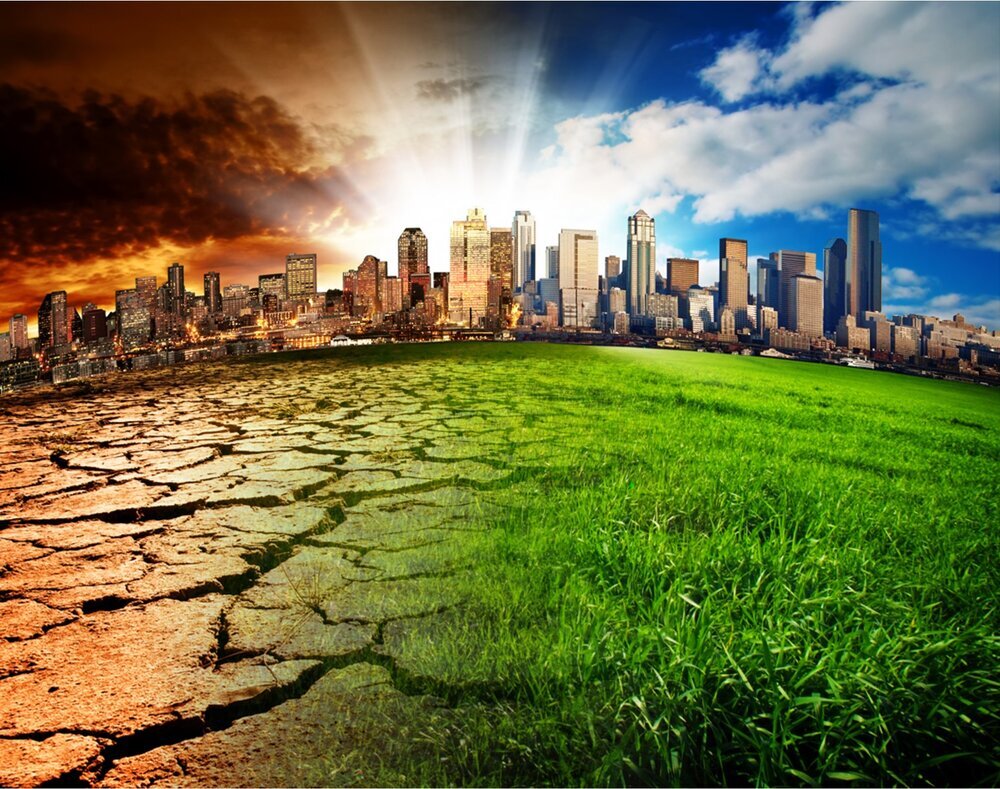Sustainable urban landscape, a strategy for climate change adaptation

Water resources play a vital role in various aspects of human life, including environmental, economic, and cultural aspects. Since the industrial revolution, human activities have led to global warming and climate change.
Climate change impacts have adverse effects on water quality, supplies, and demands, especially in dry and hot regions like West Asia. Most people in the region are struggling with water scarcity, rising sea levels, and water pollution.
In an exclusive interview with the Tehran Times, Maryam Rezaei Ghaleh, a researcher and expert in the urban landscape, climate change, and environmental health, said that a sustainable urban landscape could be implemented to mitigate Iran's climate change and water crisis.
How do climate change impacts affect water resources?
People worldwide face scarcity of fresh water because of the increase in the world's population and temperature.
Global warming and climate change affect water supplies, and the growing population directly impacts water demands. Urban development and economic growth require reliable water resources to meet their basic needs, while dry regions face a downward trend in water supplies.
So, climate change affects not only our environment and natural ecosystems but also economic growth and sustainable development.
Why is an adaptation to water scarcity due to climate change necessary in Iran?
Predictions indicate that climate change exacerbates water stress in arid and semi-arid regions in West Asia, including Iran. More than two-thirds of Iran has a dry and semi-arid climate with little rainfall.
Iran's population is one percent of the world's population, while it has only 0.2 percent of its water resources. Therefore, water scarcity and overutilization of aquifers are critical environmental challenges in Iran, and this crisis has raised the possibility of regional and international tensions significantly.
So, adapting to water scarcity in arid and semi-arid areas of Iran is necessary, especially in cities with high populations. The United Nations set up 17 interlinked global goals for sustainable development in 2015 that the 6th goal is ensuring sustainable water and sanitation management for all as the core of sustainable development, critical to the survival of people and the planet.
This goal goes beyond drinking water, sanitation, and hygiene and addresses the quality and sustainability of water resources. So, we need to take steps to meet this sustainable development goal in Iran by 2030.
How does water-saving irrigation contribute to climate change adaptation in Iran?
According to the United Nations, approximately 70 percent of all water from rivers, lakes, and aquifers is used for irrigation and agriculture.
In cities, water is also used to create and maintain public green spaces like parks and urban gardens. On the other hand, accessible public green spaces are essential for all because green spaces have multiple environmental, health, and social benefits.
So, we need to look for a way to save both green spaces and water resources to mitigate climate change. Optimum water usage in green space irrigation can play an important role in tackling the water crisis.
In addition, sources of drinking water and green space irrigation are often shared in Iranian cities. Although generally, the water of the green space is not purified, while the drinking water is filtered. But due to shared resources, we can reduce drinking water risks by water-saving in irrigating green areas.
What are the solutions to save water in urban green spaces in Iran?
There are many solutions to reduce water consumption for irrigating parks and other green spaces in Iranian cities.
One of these solutions is planting low-water and drought-resistant plants. Also, the use of plants whose natural requirements are appropriate to the local climate is emphasized.
Another solution is implementing xeriscaping as a process of landscaping that reduces or eliminates the need for irrigation. Also, since grass with high water requirement is widely used in Iran's urban green spaces, it is better to replace grass with native ground cover plants that require less water or use species of grass that require little water in necessary cases.
It is also crucial to plan the irrigation period of trees and change the pattern of irrigation hours of green areas (irrigation in the early hours of the day and night).
In addition, using plant mulch can reduce evaporation, retain soil moisture, and increase better penetration of water to plant roots.
Adding zeolite is beneficial to the soil for water retention in root zones. Also, pruning and fighting weeds can reduce water consumption. Most importantly, using modern irrigation methods and smart irrigation in urban green spaces can save water sources.
Besides, the separation of potable water and non-potable water branches and the usage of recycled water for irrigating green spaces could reduce water consumption. Also, we can use rain and snow by collecting them in reservoirs for irrigation.
